// EXPLORING THE RELATIONSHIP BETWEEN HUMAN AND TECHNOLOGY // The Human Situation 2.0 (former L∞pland) is an independent blog dedicated to contemporary visual content, digital culture and trends. Founded in 2012 by Katrine K. Pedersen, Head of Education at ARKEN Museum of Modern Art. Katrine K. Pedersen holds an MA in Arts and Humanities from Copenhagen University, Department of Media, Cognition and Communication. She is a published writer, Associated partner at Copenhagen Institute for Future Studies, key note speaker and she is regularly featured as a tech and media expert on TV and radio. [email protected]
Don't wanna be here? Send us removal request.
Text
ALL EYES ON YOU
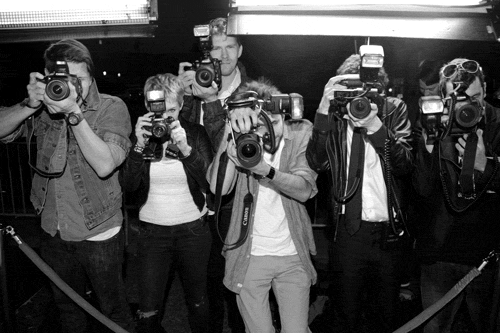
The Roman goddess FAMA has many eyes, ears and tongues: She heedlessly mixes truth and lie. She is a creature of the present moment, a vehicle of contemporary opinion, notorioulsy fickle.
- H.J. Jackson
No one can prepare themselves for suddenly being exposed or the lasting damaging effects of public shaming. Fame is associated with great sacrifice, which, depending on the degree of exposure, can lead to loneliness, psychological problems such as addiction, distrust, isolation and the loss of anonymity. As a anonymous former Danish child star, told me: “it’s like having a social phobia that’s not a phobia; it’s real – people are watching you all the time”. Or as a Hollywood star once told me about the first time he experienced “drawing a crowd”: “imagine having a favourite restaurant where you always go with your friends or family. Suddenly, one day, when I got up from meal at my go-to restaurant, the rest of the restaurant got up, too, and came out after me.”
Professor Donna Rockwell has researched the psychology of fame – what happens in the existential process of going from being an unknown to a known face. Rockwell explained to me in an interview: “one of the things that is vital for us to exist in a group is the ability to form connections, relationships. It is a deeply rooted human need”. We are celebrated now and then, step out of the flock and become the one everyone watches and cheers. For example, for birthdays and other events celebrating the individual. It is quite natural and an important aspect of many cultures, but it would be quite different if we were celebrated and cheered by the community every day. “When an individual becomes famous, when everybody is watching, when the spotlight is aimed at you, it is hugely difficult to maintain the ability to form natural relationships. And it is a human reaction to shut down and pull away so as to protect yourself. As my research indicates, the person ends up – regardless of age – losing confidence in both the world and other people. Why are you my friend? Why do you like me? Why would you like to get to know me? Is it because of who I am or is it because of what I am known for? In the case of the later, the individual often develops agoraphobia: the fear of being in public places, which is experienced as not feeling safe anywhere. As Harrison Ford once said, being famous is like walking around with a skunk on your head. It is very descriptive of how a famous individual experiences fame.
As part of her research, Rockwell studied the behavioural and psychological conditions of a person who had experienced going from being an unknown to a known individual. The known individual, who participated in the study “Being a Celebrity: A Phenomenology of Fame”, describes being famous as “bizarre, surreal, scary, lonely, terrifying, intimidating, embarrassing, confusing and invading. An experience of being deprived of their personal freedoms, one that creates a distance to the world around them, and the consequence is a constant sense of distrust towards other people”. In Rockwell’s words, it is a difficult terrain – and extremely destructive. For example, the famous person is forced to create a kind of split personality: “they are forced to shift back and forth between the two ‘MEs’ in their daily lives, which can be exhausting, because who can ever be prepared for that kind of relational dynamic with other people, or constantly act reserved with people in those groups and context, which you step in and out of all the time?”
One of the superstars who contributed to Rockwell’s research describes celebrity as a large inflatable wall that is always present: “it’s always there, it’s the elephant in the room, the elephant who’s always there when you go to lunch or when you go to the park, it’s always there”. It becomes an addiction for some – their identity becomes entwined with fame and a kind of love-hate dynamic emerges: they want to be famous, but they also hate what that fame has done to them. They hate that it has restricted their quality of life rather than enriched it. Rockwell emphasises the need to inform people before they choose to expose themselves to the limelight. “But there’s no boot camp that explains how difficult it is and how impossible it is for even the most down-to-earth person to avoid the power of fame that can be reminiscent of an accident caused by a car driving too fast – it changes you one way or another”.
A life in the public eye gives power and access to unprecedented groups. It could be VIP fora, A-list events, restaurants, and so on. And this lifestyle leads to an addiction to the kick got from being chosen. One well-known person involved in Rockwell’s research says, “I’ve been addicted to different things, and the most addictive is fame”. Fame is ‘Hollywood Currency’, it allows access to power and influence and, as Rockwell points out, it is, therefore, crucial that this power is used in such a way that makes sense on a human plane. And it can be a long and psychologically challenging road trying to make sense of being famous. For the individual, becoming famous leads to a shift in the balance of power in relationships, personal as well as professional. Over time, fame fundamentally changes relationships with friends, family and business associates. The reason being that the experience of living as a ‘star’ violates the accepted norms for human social behaviour. And this separation and experience of being socially amputated from others creates an emotional distance and a state of isolation.
The psychological process of going from being an unknown face to a known one should, according to Rockwell, not be seen as a process in which adaptation is the solution or the ending: “adaptation is not necessarily positive – it is just one way of living with [the situation]. That does not mean you can live in balance with a limited social life: you still have to live with the fact that there are always a million eyes on you when you go for a walk in the park. Someone once described it to me as “a sea of eyes”. Adaptation is difficult, because it creates a reliance on being recognised – but for something that once was: “hey, were you not once in… is that you?” But the person still exists – and it can be difficult to live with being a ‘has been’ in the eyes of others. They will never again be that person, who ‘was once in’; be that person other people see them as, Rockwell emphasises, continuing: “I have 7850 likes, therefore I am (referencing Descartes’ cogito ergo sum, I think therefore I am). The spotlight shines in our eyes. Western culture praises what is on the outside, not the inner values. It is about how much attention we get, how much attention we can generate, how many likes we get on Facebook, how many retweets on Twitter, how many hearts pop up on our Instagram photos, etc. Everyone assumes it is a confirmation of the surface of our identity and existence. But no one can base their identity and existence on something so superficial – on the contrary, that is something inside. I am afraid that emotional intelligence is being suppressed in today’s children and adolescents, so they fail to see ‘likes’ and lack of ‘likes’ in the right context”.
Extract from PHONO SAPIENS - The Slow Mammal on Speed
GIF: Source www.roleplaygateway.com
7 notes
·
View notes
Text
..people use social media not to unite, not to open their horizons wider, but on the contrary, to cut themselves a comfort zone where the only sounds they hear are the echoes of their own voice.. - Zygmunt Bauman
“The difference between a community and a network is that you belong to a community, but a network belongs to you. You feel in control. You can add friends if you wish, you can delete them if you wish. You are in control of the important people to whom you relate. People feel a little better as a result, because loneliness, abandonment, is the great fear in our individualist age. But it’s so easy to add or remove friends on the internet that people fail to learn the real social skills, which you need when you go to the street, when you go to your workplace, where you find lots of people who you need to enter into sensible interaction with. But most people use social media not to unite, not to open their horizons wider, but on the contrary, to cut themselves a comfort zone where the only sounds they hear are the echoes of their own voice, where the only things they see are the reflections of their own face. Social media are very useful, they provide pleasure, but they are a trap”.
EL País
0 notes
Text
THE LAST ARTIST - and the cultural desert of Silicon Valley
I’ll remember 2018 as the year the Big Tech industry ultimately turned the area around San Francisco into a cultural desert; a five-star dream for the privileged few. This is a tribute to the lost spirit of art and counterculture - a portrait of one of the last artists.
"What the arts allow us to do is develop the muscle required for discernment, and also strengthen our sense of agency to determine for ourselves how we’re going to tackle a given problem" - MIT TECHNOLOGY REVIEW
Once upon a time, the area around San Francisco was the stronghold of American counterculture. Artists, activists, entrepreneurs, feminists, race and equality activists dreamed of and fought to disrupt capitalism and create new sustainable humanistic strategies. 40 years later, the Big Tech industry has turned it into a five-star dream for the privileged few. The cost of living there is now so high that one in four in the Silicon Valley area is on the poverty line. It has been called The Silicon Valley Paradox – 26.8%, nearly 720,000 people are “food insecure.” Two years ago, The New Yorker wrote “Silicon Valley has an empathy Vacuum.” And at the end of 2018 one of the most influential artist of the robotic revolution, Kal Spelletich was ousted.
Portrait of one of the last artists
- Originally published in SCENARIO no. 1, 2014.
Behind a row of rundown warehouses in San Francisco’s Butchertown grows a wonderland of robot constructs, flame throwers and military metal gadgets between eerie iron trees and magical disco balls. This is where Kal Spelletich lives with his six-toed dog.
“Do you want a cup of herbal tea,” he asks in a friendly manner as he invites me inside into an almost post-apocalyptic universe that besides being deadly is his home. It is at once scary and welcoming. There are no boundaries here: art, fire and a spiritual robot that he is currently building. All the projects that Spelletich have been part of seem to point towards a larger cultural shift. One example is Burning Man, which originated in San Francisco in the mid-1980s, and right now it is developments in robot technology. This is a trend born from the co-creation and open source philosophies of digitisation and advanced methods like 3D tools, with popular examples like Google’s autonomous car, iRobot’s development of a 3D robot that can be used in factory production, and not least the entire startup infrastructure with actors like Lemnos Labs, Robot Garden and Robot Launchpad.
Experiments in the borderlands
Where the robot industry in general is situated somewhere in the robot evolution’s refinement of arms and hands with an eye to production and finish, a few frontrunners are experimenting with the robot’s brain. One such is Industrial Perceptions in Palo Alto, which deals with intelligent software and in this connection with subjects like perception, manipulation and control. However, where these point towards commercial breakthroughs, Kal Spelletich goes his own ways with his experiments in the borderlands of robotics. ” I often feel a bit like I am working in a vacuum, even when I’m in the eye of the storm,” he says. It is in the tension field between future product opportunities like intelligent robots and the world of arts that he is most at home. His art grapples with the ambivalent state that human beings were planted in when the machine was invented: we are at one and the same time fascinated and frightened by our own power of creation. “I guess art is a bit like staring directly at your own mortality. The more we people choose to stay at home and just sit in front of a computer, playing games or watching movies – instead of going out and getting real experiences – the more we will be attracted by events or art that remind us that we are mortal; that we are human beings and that things don’t always go the way we expect.” As a part of the exhibition Weird Science, Spelletich has recently built a ‘Space Measurer’ from small mirrors and blue laser lights that can measure the speed of light. New York Times has written about his art: “If the essence of science is the development and testing of theories about reality, then you can’t say that the artists in this unfocused but intriguing show are doing science, weird or otherwise. Where the two domains [art and science] can overlap, though, is in playing with technology.” It is in such playing that Kal Spelletich develops robots that tickle our idea about the unlikely and our perception of ourselves as human beings. “People desire real-life adventures. The more this is taken away from you or denied you, the sicker you become. Personally, I have never been particularly good at passive entertainment. Most people have never loaded a gun, hunted an animal, cleaned it and boiled and eaten it. Yet these are the most basic, simple and early experiences. I don’t say that killing animals is the right thing to do, but it is something that most people no longer experience. I try to give people a cathartic experience while also challenging their prejudices about what art and content can be. The key is to add a story or concept to the aesthetic. Parties, celebrations, substance abuse, alcoholism, violence, sex, the human condition breaks down and pulls itself up again. They reflect all the real things that can shape and change our lives: like a carnival.”
Punk
Besides his artistic vision and his playing with the expressions of technology he is known to be one who defines technological directions and who spits out trends long before they land in the time the rest of us live in. Hence, it is not rare that people come knocking on his door. This might be NASA in need of his take on a new invention, Hollywood film producers – like the idea men behind the movie The Matrix – needing to visualise the future, or ordinary Silicon Valley engineers on the run from corporate desks and constricting suits that miss playing with the electronic universe. Spelletich was born in an elevator and grew up as number seven of a sibling flock of nine in Davenport, Iowa. “The city has recently been elected the worst place to live in the US,” he says with clear ambivalence about his upbringing: “I got a chemistry set when I was nine and experimented with electricity, fire and fireworks. At the same time, I started working in my dad’s construction firm.” When fifteen, he ran away from home and lived in abandoned buildings and on the street. When punk rock hit the 70s, he saw the light. He felt at home in this noisy and anarchic universe of music. “It was the DIY energy and the anti-authoritarian rebellion that fascinated me – that you could create art while destroying the framework,” he says. Kal Spelledich was in the middle of the crucible, and he still is as part of the collaborative SEEMEN, which throughout its history has developed technological DIY platforms and explored future scenarios with interactive robots and kinetic art. However, you will never get him to mention the icons with whom he in his time has experimented and created art. He evaluates his collaborations by their creative, artistic and anarchic value, not by the names that have become part of the history of art, music and movies. It is almost an insult if you ask him for names. In general it is almost impossible to make him answer questions that have to do with specific projects or products he has taken part in creating. He is the eternal punk soul who disappears when a process becomes too concrete. However, even though the many things hanging from ceilings and on walls and shelves with whimsical inventions in his San Francisco cave hisses ‘fuck the system’, they are also nostalgicn memorabilia from his collaborations with everything from Hollywood blockbusters like Titanic to NASA.
Slacker
One thing he can’t run away from is when he was immortalized in the cult movie Slacker (1991) by Richard Linklater (the man behind e.g. the movie trilogy Before Sunrise, Before Sunset and Before Midnight; ed.). They met each other in Austin in 1988. “I met Kal Spelletich at an art event with all sorts of insane experiments. Even then I knew that he was something special. His head was full of ideas, and his art had this particular physical dimension. I remember him saying something like: ‘The art of painting is a dead genre – I don’t even want to talk about it.’ He had made a backpack from a TV set as a commentary on the industry. When I had to devise the scene in Slacker with this guy in a room full of television sets flickering in an endless river of clips, I thought of Kal and his TV backpack. That he himself was a part of the TV was an incredible sight. And then I had always been mad about Kal’s performance and was sure he would be good on the screen. He is a true pioneer and totally badass! He is guaranteed to always be ahead of the pack, never at the back,” Richard Linklater says. Spelletich’s role in the movie – the TV guy – is a description of a particular type of media user that has stopped looking for the truth in the physical world and instead finds it on TV or in a smartphone. “I wrote about this ten years ago, and it is truer now than ever,” he says. “Most of our reality is shaped by the media. We need live experiences; a digital recording will never replace a real-time event, and I’m not talking about a practiced set or playing timed to a heartbeat. Perhaps there would be an aesthetic or beauty in that, but it always contains a loss of spontaneity, of reality.” And Spelletich keeps working with this attitude. Where the robot industry at the moment sets the boundaries for future commercial possibilities regarding the individual experience through recognition and hence also faith, Kal Spelletich is in the process of proving that robots can be built to have a sixth sense. This may seem a smidgen insane, but this has always been the case with Spelletich’s art. He experiments with possibilities we cannot yet imagine.
Kal Spelletich Kalman Spelletich (b. 1960) grew up in Davenport, Iowa. He ran away from home at the age of 15 and lived as a squatter for many years. In 1980, Spelletich was accepted at the University of Iowa where he took a bachelor’s degree in Interdisciplinary Arts and in his own words “discovered art through the camera”. He later got a master’s degree from the University of Texas. Spelletich is very active on the underground art scene and has since 1994 exhibited in many galleries, almost always with a focus on deconstructing the machine or experimenting with human-machine relations. In 1988, Spelletich was co-founder of the art collective SEEMEN, which is an “interactive machine art performance collective”. The collective specialises in performances and is particularly well known for its great influence on developing the concept of Burning Man. Spelletich has also worked with other art collectives like Survival Research Laboratories, which also works with machine performance art and especially operates with large technical installations. Spelletich has made special effects for several movies, including Titanic and The Matrix, and he has acted in the cult movie Slacker.
Originally published in SCENARIO no. 1, 2014.
0 notes
Text
12 years ago Britney Spears walked out of rehab, the iPhone and the first Kardashian episode launched.. and our manic fame fixation began..

‘“10 years ago Britney Spears walked out of rehab and into Esther's Hair Salon in Los Angeles, grabbed a pair of clippers and shaved her head, citing the waiting paparazzi as motivation. Four months later the iPhone launched. The following month the first episode of Keeping Up with the Kardashians aired on US TV...” (Ferrier,The Guardian)
It has now been 10 years of manic fame fixation.. with YouTube child celebrities, various TV concepts depicting baking, dancing, singing or dating amateurs. Guided by the fascination of superstars living in opulence and sharing their ‘bling’ on Instagram. And, not least, by always having a private audience in our pockets, not in its millions like for Britney Spears and the Kardashian sisters, but we are available and on-screen with everything from coffee drinking and dog walking to interior design, cooking, celebrations, walks in the rain, sunrises and sunsets.
THE GENERATION THAT GREW UP IN A SELFIE
With new media and especially social media, we have become accessible and searchable; our privacy has been exposed to a greater or lesser degree. It is no longer rare for new-borns to have posted on Facebook before they themselves are even aware of that reality. We do this as parents, because we are happy, proud and would like to share a happy moment with the world, but it means that the private photo album has received an audience that not only includes those closest to us, but an audience of perhaps another 200 or even more. Over half of all new-borns are visible online before the first day of their lives is even over. In the UK, 62% of new parents post photos of their new-born on Facebook within an hour after birth (averaging 57.9 minutes).The most popular media, according to Posteria, who carried out a survey of 2,367 parents, is Facebook (77%), followed by Instagram (48%) and then Flickr (32%).
And as they are online from birth, why not provide them with an online identity like media adviser Katie Wagner recommends: "If you're looking for a unique baby gift idea, why not give an email address with the new-born's name?" A simple and basically harmless idea. Unless we as the parents of those children growing up in a selfie are not the right ones to make that decision? Are we even aware of the consequences? Have we taken into account the ethical dimension, the question of a person's rights? And have we considered what values we are communicating to our children when we let a screen mediate relationships as a welcome ritual for the new-born? In the book Your Children are Listening: Nine Messages They Need to Hear from You, Professor of Psychology Jim Taylor outlines how values, often implicit and perhaps unconscious, communicated via actions shape our children. It is precisely these questions about values that drove Dutch designer Laura Cornet to develop baby selfie technology: New Born Fame. A mobile app with Facebook and Twitter icons that allows the new-born themselves to take pictures and post them on social media. Absurd? Maybe, but Cornet, as part of her final year project from Design Academy Eindhoven, wanted to examine the ethical dimension of our use of digital networks: "I am not against new technology. I am very concerned about the possibilities". By contrast, she problematises our lack of relating to those social or moral dilemmas, which have followed in development's wake, she explained to Fast Company."Who actually has the right to post a baby on the internet? A baby is not old enough to decide for themselves, but it is generally accepted that it is ok if a mother decides to share a photo.
FAME IS A QUEST THAT NARCISSISTS FANTASISE ABOUT
Values shape attitudes and actions; they reflect culture and define community. For example, a value such as power motivates us to seek influence and control, and a value such as social status makes us seek out attention, to strive for what we think the group would recognise us for. Yalda T. Uhls, Professor of Psychology at UCLA Children Digital Media Center, worked in cooperation with Professor of Psychology at UCLA, Patricia Greenfield, on a year-long research project into fame’s value and the effect of media development on the identity of children and adolescents. I visited them in Los Angeles in connection with the release of one of their studies. They have investigated how social structural changes drive changes in cultural values. Some of the socio-demographic changes that have influenced the prevailing values in the Western world are urbanisation, education and wealth. But the development, according to Uhls and Greenfield, which has had the greatest influence on the transformation of cultural values in recent decades is communication technology. During the 2000s and until the 2010s, the number of internet users has increased by 157%, and the use of computers for 8-18-year-olds has increased 300% over the last decade. Media development has shaped psychological development including an increase in individualisation, and, according to the Uhls and Greenfield, in the emergence of a narcissistic culture where it is all about being seen or heard by as many people as possible: “Fame is a quest that narcissists fantasise about”. Over the last eight years, as more smartphones have seriously penetrated the market, we have, according to Uhl and Greenfield, experienced an historic increase in narcissistic personality disorders in adolescents, beginning in prepubescence with a childish desire for fame. And although children’s aspirations may change and become more realistic as they get older, it is precisely in these developmental years that children begin to shape their values and self-images. Whereas children once dreamed of becoming fire-fighters, midwives, doctors or ballerinas, today they are dreaming of becoming the next Miley Cyrus or standing on the stage of a TV talent show. And Uhls and Greenfield point to the range of media and those values communicated to children and young people via both TV platforms and social media as the primary reason for this development. “Both American Idol, which shows ordinary people striving to become pop stars, and social media like Facebook that encourages people to share information about themselves in a semi-public online universe capitalises on people's fascination with fame. By pretending that almost anyone can capture a large audience, these cultural products have become a dominant global force”.
A force that has led to a change in values: thirty years ago it was the individuals place in community that was perceived as the most important value. Today, it is the dream of becoming famous.
Extract from Phono Sapiens (launch in English 2019)
Exhibition at the Saatchi gallery in London to mark 10 years of the Kardashians’ reality TV show
0 notes
Text
Phono Sapiens - The Slow Mammal on Speed

This book begins at the limit of our fascination with technology – in the blind spots of the digital revolution. We tend to focus our attention on the near and, in some cases, the somewhat narrow viewpoints. Technological innovations are constantly accelerating, surpassing our imaginations time and again. And how are we to imagine where those limits, where the consequences will reveal themselves when their development is constantly taking new directions? The blind spots often surprise us – when it is too late – simply because we do not relate to technology’s side effects.
Phono sapiens – the slow mammal on speed was not born out of technological anxiety and certainly not out of a digital dystopia. It is the product of years of research, travelling, interviews and meetings with professors, activists, celebrities, former child stars, politicians, artists and representatives of some of the world’s largest media companies, who all have one thing in common: they operate within the blind spots of the digital revolution.
It is about how one of the world’s slow mammals accelerated their pace and are now about to hit the wall: PHONO SAPIENS!
Phono Sapiens - The Slow Mammal on Speed will soon be available at the World Wide Web in English in a new digital edition.
0 notes
Photo

Research Spotlight: The Door-Knocker Earring “I’ve come to embrace these items as symbols of resistance, and believe I have a right to be taken seriously no matter what I have on. I should be able to define myself and not be put into a box because of what I’m wearing.”
The door-knocker earring is more than a piece of jewelry, but a cultural marker with deeply rooted significance for women of color. For this reason, it is one of 111 indispensable design objects included in the upcoming exhibition, “Items: Is Fashion Modern?” In a new interview from the curatorial team, 3 wearers navigate the cultural nuances and meanings of the iconic earring mo.ma/2t6GjJn
[Photo: Amanda Lopez. Styling: Tanya Melendez]
4K notes
·
View notes
Text
NEW RESEARH: FOMO & SOCIAL MEDIA’S IMPACT ON MENTAL HEALTH

Researchers at Michigan State University (MSU) found a connection between high social media use and the risky decision making commonly found in other types of addiction.
“Our findings will hopefully motivate the field to take social media overuse seriously,” researcher says
It is the first study to examine the relationship between these types of decision-making capabilities and social media, and once again draws attention to social media's impact on mental health.
It took us 20 years to get used to the telephone; it took us that amount of time to learn how to understand the first one-to-one communication tool and, not least, how to use it effectively in our everyday lives. Likewise, we have had almost 12 years to get used to the mobile phone, and we have had roughly four years to do the same with the internet and texting, about three years for blogging, and in even less time social media has become a permanent part of our communications’ arsenal.
“We have not had enough time to learn how we can integrate the new technology in a favourable way. It is a combination of pace, fascination and the fear of being left outside (FOMO: Fear of Missing Out), which means that many people today are showing signs and symptoms of iDisorders,” says Larry D. Rosen, a professor of psychology at California State University. I visited him in connection with an interview about his latest research. He has almost 25 years of experience in researching human responses to technological development – and he introduced and researched the phenomenon of iDisorders: mental diseases caused by everyday technology. According to him, the main reason for our inconsiderate behaviour is a basic fear of not keeping up. “Every time the smartphone beeps, there is a corresponding chemical reaction in the brain, and these neurotransmitters induce mini-anxiety attacks. So each and every time we hear a beep, there is a rush of something in our brains. And it’s simply not good for us to have these continuous little anxiety attacks every day or be in a state of constant alert”.
iDisorder – psychological disorders caused by our 'smart' behaviour
In a study of the digital habits of over 700 people, he discovered that the vast majority of them checked text messages, emails or social media either all the time or every 15 minutes. He also found that there is a correlation between how often a person is online and the development of mental illnesses such as obsessive personality traits, depression and mania. “I am not arguing that we are all crazy and that technology is to blame. I find, however, that our actions and behaviours when we use technology make us appear out of control. And it’s a balance – none of the iDisorders, I work with is all or nothing, it’s about gradualness. Problems arise when the behaviour interferes with life. And when does it do that? It’s about what you avoid or miss when you’re constantly checking your phone or Instagram profile. Is it, for example, being present with your children, your friends? If it affects the obligations we have as human beings – be they social, educational or otherwise – then you have a problem”.
If you look at the research especially regarding children and young people – then the situation today seems to be that teenagers, in particular, prefer electronic communication with their friends rather than face-to-face. According to Rosen, it is not because they do not want to meet in the physical world, “it is because a conversation requires that you can unitask, that you only do one thing at a time. They find that difficult, and in most cases they can’t. That’s why they’re always doing something on their smartphones while they are also doing something in the physical world. And even though they themselves are convinced that they can easily multitask and switch between a conversation and a post on Instagram, our research indicates that they can’t”.
The only way we can do two things at once, is, according to Rosen, if one is semi-automatic; that which, for example, enables us to walk without falling while talking on a mobile phone. But we can’t be both on a mobile phone and check the weather forecast, Facebook or Google without one of them suffering.
We have not become asocial, we have become hypersocial
It is a primordial need to be part of a flock, to be recognised, invited, perhaps even to feel popular or indispensable. And with smart technology and especially social media, this need leaves the brain an overloaded part of the body. We are afraid of missing anything, but are paradoxically constantly missing the rush of online activity: so we try to multitask hypersocial behaviour.
Children and young people, in particular, have become accustomed to the fast pace and fast switching – for the simple reason that they have grown up with smartphone-multitasking as something to be taken for granted. “What worries me is whether they actually learn to talk? My guess is that they don’t learn the skills they need for a face-to-face conversation: how you make eye contact, how you take turns speaking, how do you listen or are aware that the other party in a communication exchange is not necessarily in the same contextual space. Maybe you can tell that they seem to be having a bad day. I think we’re going to see that our children will come to lack simple training in these early and essential skills”.
Another thing that Rosen noticed is that children are really good and quick at switching from one task to another, but that they lack practise in doing something in depth. “This development is worrying. When you multitask, you are dividing your attention here and there, therefore the question we are investigating is: do their brains actually store intellectual learning, or do their brains discard the deeper layers, because they have adapted to a different pace?” Thirdly, he mentions the risk that children are less able to daydream, because their brains have become accustomed to there always being something to fill up time with. And, as the last example, he mentions the problem of the effect of smartphones on sleep patterns: many children and young people sleep with their phones on beside their bed; many check it just before going to sleep, and many do so during the night. “It’s not good, and absolutely nothing that will lead to a healthy sleep pattern, which is necessary for being able to process what has happened during the day. If you sleep well, your brain sorts out all the things you have learned and need to store, while anything irrelevant is discarded”.
FOMO // Fear of Missing Out
is a social anxiety disorder – a compulsion-based fear of being left outside of the group, to miss something that could potentially affect one’s status. It is, as behavioural researcher Andrew Przybylski describes it, “a predominant belief that others are having enriching experiences in which you do not participate”. The way FOMO is expressed is through an urge to constantly be online so as to keep up with what others are doing. He has studied the phenomenon and one of his findings is that FOMO occurs most frequently in those who are not having their psychological needs such as being loved and respected met.
Extract from Phono Sapiens - The Slow Mammal on Speed
0 notes
Text
FACEBOOK in 2019: The three second audition

“We call content that captures attention “thumb-shopping”: It should aim to stop thumbs scrolling in a matter of seconds. People below the age of 20 consume content on Facebook twice as fast as people above 50. Think of it as a three-second audition. Mobile means speed. It takes people just 1.7 seconds to consume mobile content on Facebook, compared to 2.5 seconds on desktop. The quicker your video delivers your message and captures attention, the better your chances of people remembering what they see” Maureen McDonagh, Industry Head Reatail at Facebook reveals three key principles for future financial succes (The Wired World in 2019)
0 notes
Text
“YouTube has created a restaurant that serves us increasingly sugary, fatty foods, loading up our plates as soon as we are finished with the last meal. Over time, our tastes adjust, and we seek even more sugary, fatty foods, which the restaurant dutifully provides. When confronted about this by the health department and concerned citizens, the restaurant managers reply that they are merely serving us what we want”.
- Zeynep Tufekci
YouTube, the Great Radicalizer
0 notes
Photo

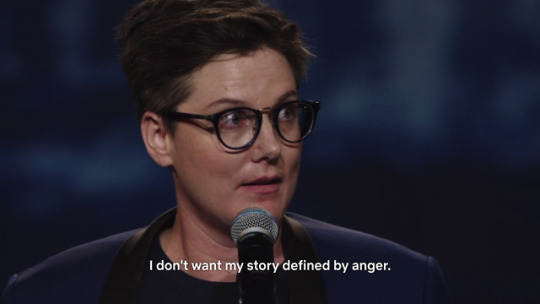

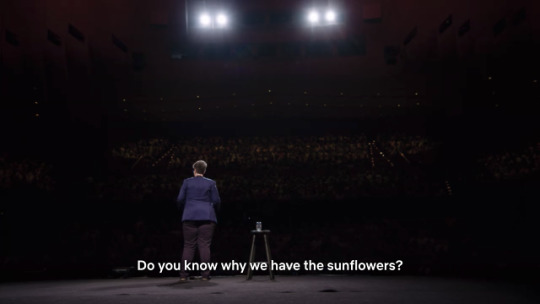
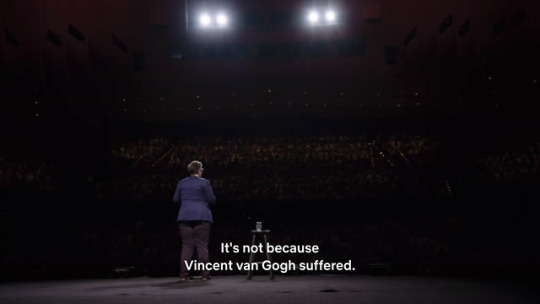
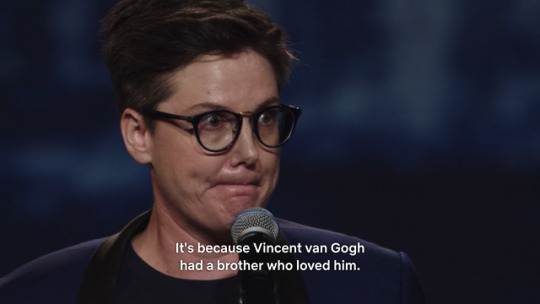

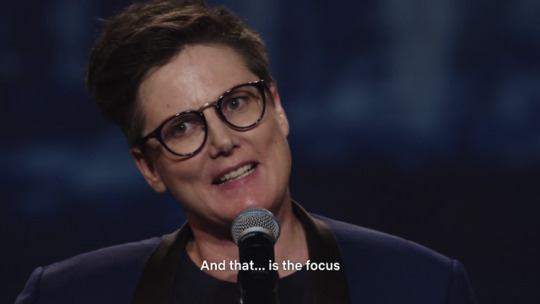


“You learn from the part of the story you focus on.”
— Hannah Gadsby, Nanette
42K notes
·
View notes






